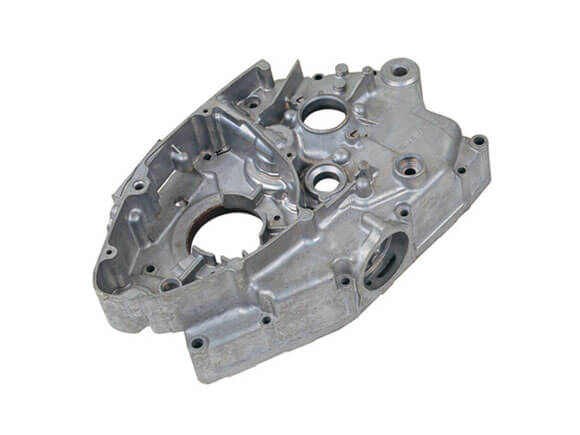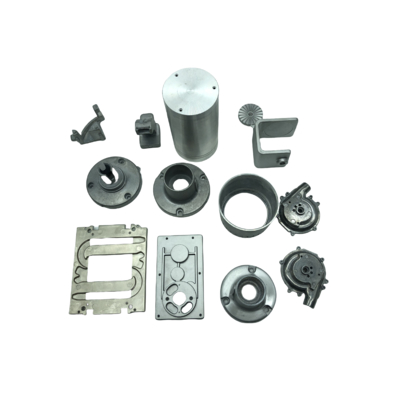Why an Aluminum Foundry is essential for innovative metal parts
Wiki Article
Comprehending the Environmental Advantages of Light Weight Aluminum Foundry Techniques
Light weight aluminum factory strategies play a vital function in advancing sustainability within the production market. By carrying out advanced recycling approaches and energy-efficient methods, these methods greatly minimize waste and carbon impacts. Innovative spreading approaches additionally boost source preservation efforts. As sectors significantly prioritize ecological duty, comprehending the complete effect of these practices comes to be crucial. What particular advancements are blazing a trail in this improvement?The Function of Aluminum in Lasting Production
Many products add to sustainable production, light weight aluminum stands out due to its distinct homes and recyclability. This light-weight steel is not just long lasting but also has exceptional deterioration resistance, making it an excellent option for numerous applications, from automobile to building. Its high strength-to-weight proportion causes energy cost savings during transport and usage. Additionally, light weight aluminum can be reused indefinitely without shedding its intrinsic qualities, advertising a round economic situation.The production process of light weight aluminum has progressed, integrating energy-efficient techniques that lower carbon footprints. By making use of eco-friendly energy sources, producers are progressively decreasing the environmental effect linked with light weight aluminum production. Additionally, using recycled aluminum calls for substantially much less power contrasted to extracting and improving primary aluminum, causing reduced greenhouse gas emissions. As sectors seek lasting services, light weight aluminum's versatility and green characteristics position it as an essential material in the quest of greener production methods.
Advanced Recycling Techniques in Light Weight Aluminum Foundries
Advanced reusing techniques in light weight aluminum factories are revolutionizing the means scrap aluminum is processed and reused. Ingenious approaches, such as closed-loop recycling systems, make it possible for shops to reclaim light weight aluminum from manufacturing waste and obsolete items efficiently. These systems lessen worldly loss and boost the quality of recycled aluminum, making it a feasible alternative to key aluminum manufacturing.Furthermore, progressed sorting modern technologies, consisting of automated optical sorting and X-ray fluorescence, enhance the splitting up of aluminum from other products, making sure higher purity levels in recycled results. This accuracy minimizes contamination, which can compromise the stability of the end product.
The combination of innovative melting modern technologies, such as induction melting and energy-efficient heating systems, enhances the recycling procedure, lowering power usage. Jointly, these developments contribute to a much more sustainable aluminum market by reducing dependence on virgin products and lowering greenhouse gas emissions connected with aluminum production.
Power Efficiency Improvements in Factory Operations
Energy efficiency renovations in light weight aluminum shop procedures can greatly boost sustainability practices. Implementing waste heat recuperation systems allows factories to repurpose excess energy, decreasing general energy usage. Furthermore, advancements in procedure automation streamline procedures, causing decreased waste and maximized resource usage.Waste Warmth Recuperation
Carrying out waste heat healing systems in aluminum factories significantly enhances energy effectiveness by capturing and recycling excess thermal energy generated during manufacturing procedures. These systems assist in the conversion of wasted warmth into useful power, which can be utilized for various applications within the foundry, such as pre-heating products or powering equipment. By recovering warmth that would or else be expelled right into the environment, shops can markedly lower their total power usage and greenhouse gas discharges. This approach not only reduces operational costs however also promotes lasting techniques within the market. Additionally, the adoption of waste warmth healing modern technologies straightens with governing requirements focused on decreasing environmental impact, making it an important component of modern-day aluminum shop procedures.Refine Automation Perks
Automating processes in light weight aluminum factories can substantially improve power effectiveness by maximizing production workflows and decreasing waste. By executing innovative modern technologies such as robotics and artificial intelligence, factories can enhance procedures, reducing unnecessary power consumption. Automated systems facilitate accurate control over temperature and material handling, guaranteeing that energy is utilized just when needed. Furthermore, real-time monitoring permits for immediate changes, minimizing the danger of power loss. The combination of automation not only boosts performance yet likewise reduces functional costs, making shops more affordable. Consequently, these energy-efficient techniques contribute substantially to sustainability objectives, lowering the ecological footprint of light weight aluminum production while meeting boosting market needs - Precision aluminum casting. Enhanced energy performance with automation represents an important action towards greener shop operationsMinimizing Waste Via Ingenious Casting Approaches
Innovative casting techniques play a necessary function in reducing waste in light weight aluminum factories. Techniques such as advanced molding and the application of recyclable products substantially reduce manufacturing scrap. These techniques not only enhance efficiency however likewise contribute to a more lasting manufacturing process.Advanced Molding Techniques
As industries significantly focus on sustainability, progressed molding techniques in light weight aluminum factories become effective services for decreasing waste. These innovative approaches, such as 3D printing and accuracy mold and mildew making, considerably boost the efficiency of the spreading process. By utilizing computer-aided style (CAD) and simulation modern technologies, producers can optimize mold geometry, reducing material use while preserving product honesty. In addition, advanced techniques enable the manufacturing of complex forms that conventional methods can not attain, lowering the demand for added machining and thus reducing scrap material. The flexibility of these methods permits quick prototyping, more lowering lead times and power consumption. On the whole, the execution of advanced molding strategies stands for a vital step toward eco accountable light weight aluminum production, aligning with international sustainability objectives.Recyclable Material Application
Recyclable materials play a crucial duty in reducing waste within light weight aluminum foundries, changing the casting landscape with their efficient utilization. By including scrap light weight aluminum and other recyclable components right into the manufacturing procedure, factories can considerably lower the demand for virgin materials. This not only conserves natural resources but also reduces energy intake connected with mining and refining. Ingenious casting methods, such as die casting and sand casting, permit for smooth combination of these products, ensuring high-quality results. The usage of recyclable materials promotes a circular economy, where resources are continually recycled click this and repurposed, minimizing garbage dump contributions. Inevitably, the strategic usage of recyclables boosts sustainability while advertising cost-effectiveness in aluminum foundry procedures.Reducing Production Scrap

Life Cycle Analysis of Aluminum Products
Although aluminum is extensively acknowledged for its light-weight and durable residential properties, an extensive Life Cycle Evaluation (LCA) exposes the environmental influences associated with its use, disposal, and production. The LCA procedure examines the energy consumption, greenhouse gas exhausts, and resource deficiency linked to aluminum items from extraction of bauxite ore to end-of-life management. Key light weight aluminum production is energy-intensive, typically relying upon nonrenewable fuel sources, which contributes substantially to carbon footprints. In comparison, recycling light weight aluminum offers significant ecological benefits, as it uses only a fraction of the power needed for primary production. In addition, the reusing procedure decreases garbage dump waste and conserves natural deposits. The LCA likewise thinks about the product's durability and capacity for reuse, stressing the relevance of sustainable layout. Overall, understanding the life cycle effects of light weight aluminum products is essential for making educated choices that focus on ecological sustainability within the sector.Instance Researches: Successful Sustainable Practices in the Market
The light weight aluminum market has started to embrace cutting-edge sustainable techniques that address the ecological difficulties determined in Life Cycle Evaluations. One notable case is a leading factory that applied a closed-loop recycling system, significantly reducing waste and power usage. By recycling scrap light weight aluminum in production, the center achieved a 40% decrease in its carbon impact.One more instance involves a producer that embraced sustainable power resources, powering its operations with solar and wind power - Aluminum Foundry. This change not just decreased greenhouse gas discharges however also improved the firm's track record among environmentally conscious customers
Additionally, a third shop has bought innovative spreading techniques, which maximize product use and decrease flaws, better lowering source intake. These study show that the aluminum industry is capable of incorporating lasting techniques, demonstrating both ecological duty and economic practicality, inevitably adding to a more sustainable future.
Frequently Asked Concerns
How Does Light weight aluminum Compare to Other Steels in Sustainability?
Light weight aluminum is usually taken into consideration a lot more lasting than many metals because of its recyclability, reduced energy demands for production, and lowered environmental effect. Its lifecycle performance exceeds that of steel and copper in different applications.What Is the Carbon Impact of Light Weight Aluminum Factory Processes?
The carbon impact of light weight aluminum foundry processes differs, commonly varying from 4 to 15 metric loads of CO2 per lots of light try this site weight aluminum created. Elements affecting this include power resources, technology, and the performance of operations.Exist Health Threats Connected With Light Weight Aluminum Factory Procedures?

What Are the Prices Related To Lasting Light Weight Aluminum Techniques?
The prices connected with sustainable aluminum methods consist of higher initial financial investments in technology, possible rises in operational expenses, and recurring upkeep. However, these are typically countered by lasting financial savings and decreased ecological influence.How Does Light Weight Aluminum Recycling Impact Resident Communities?
Light weight aluminum reusing favorably impacts neighborhood areas by developing work, decreasing land fill waste, and reducing energy expenses. It promotes economic development and promotes environmental stewardship, causing much healthier living problems and boosted neighborhood interaction in sustainability efforts.In addition, the use of recycled light weight aluminum requires considerably less energy compared to extracting and refining key light weight try these out aluminum, leading to reduced greenhouse gas emissions. Advanced recycling techniques in aluminum foundries are revolutionizing the method scrap light weight aluminum is processed and recycled. Aluminum Foundry. Implementing waste heat recovery systems in aluminum shops considerably boosts power efficiency by catching and reusing excess thermal power generated throughout production processes. Automating processes in aluminum foundries can greatly enhance power effectiveness by maximizing manufacturing workflows and reducing waste. The carbon impact of aluminum foundry processes differs, generally ranging from 4 to 15 metric tons of Carbon dioxide per bunch of light weight aluminum produced
Report this wiki page